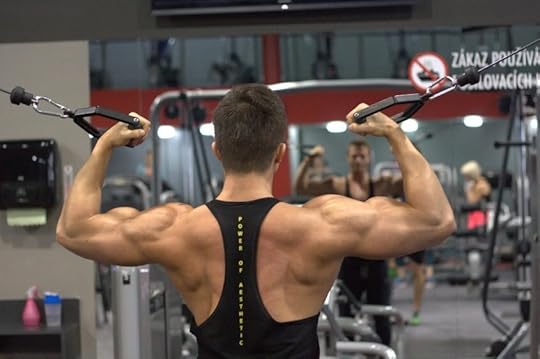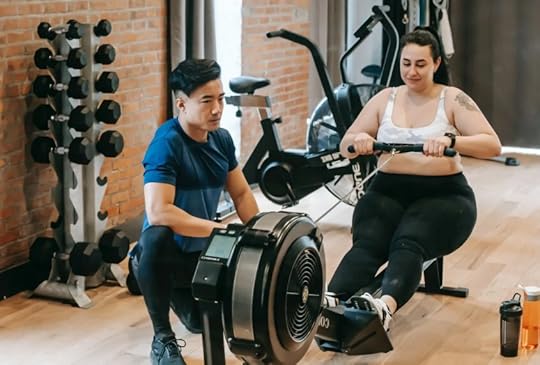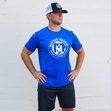Unlocking Strength: How Cable Machines Build Muscle with Precision and Control
Cable machines are a cornerstone of modern gyms, designed to deliver consistent resistance through a system of pulleys and adjustable weight stacks. Unlike free weights, which rely on gravity, cables provide controlled tension across multiple planes of motion. This makes them stand out as versatile tools for developing strength with accuracy and stability.
For lifters at any stage, the promise is clear: cable machines bring precision, control, and adaptability that free weights alone can’t always match. Whether you want to fine-tune your form, isolate hard-to-target muscles, or add variety to your training, cables create opportunities to train smarter.
You should care about them because they let you move naturally, challenge your muscles in every direction, and build strength without the same risk of uncontrolled movement.
What makes cable machines different from free weights?What is a cable machine? Cable machines are strength-training systems that use pulleys, cables, and a weight stack to create adjustable resistance for a wide variety of exercises. Unlike fixed-path machines, they allow you to move freely while still providing guided resistance.
At their core, cable machines differ from dumbbells, barbells, and resistance bands because they deliver constant tension throughout every phase of the lift. With free weights, resistance varies depending on leverage and gravity. Bands change resistance based on stretch length. Cables, however, maintain steady pressure and allow for more fluid, multi-directional exercises.
This consistency makes them uniquely effective for targeting muscles at angles free weights often miss, while also letting you adjust load and path to suit your body.
Here’s how they compare:
Free weights – Offer natural movement patterns, but resistance drops at certain points in the range of motion.Resistance bands – Portable and inexpensive, but resistance is variable and less precise.Cable machines – Provide constant tension, adjustable angles, and a wide variety of controlled exercise options.How do cable machines actually work?A cable machine operates through a simple yet effective mechanical system. A weight stack connects to one or more pulleys via steel cables. When you pull on a handle, the force transfers through the pulley system, lifting the selected weight plates. The smooth travel of the cable ensures resistance is steady across the entire motion, unlike free weights where leverage points create sticking spots.
This system allows you to adjust both resistance and direction instantly, making it one of the most versatile strength-training tools.
Main mechanical components include:
Pulleys – Guide the cable and control resistance direction.Cables – Connect the handle to the weight stack.Weight stack – Plates that provide adjustable resistance.Handles/attachments – Grips or bars used to pull or push.Carabiners – Connect attachments securely.Frame – Provides stability and support.Adjustment pins – Let you select weight or pulley position.What are the main parts of a cable machine?To understand how these machines function, it helps to look closely at each component:
Pulleys – Rotating wheels that reduce friction and guide cable direction.Cables – Coated steel wires that transfer force efficiently.Weight stack – Series of plates linked to a selector pin for quick changes.Handles – From straight bars to rope grips, these allow different movements.Carabiners – Small but vital connectors for swapping attachments.Frame – The steel structure keeping the system steady.Adjustment pins – Used to change pulley height or lock the selected weight.What muscles can you target with cable machines?Cable machines allow you to hit every major muscle group with precision. Unlike some equipment that locks you into a single path, cables can be adjusted to mimic natural joint movement, letting you strengthen muscles from multiple angles. They’re equally useful for isolation drills and full-body functional training.
By adjusting pulley height, handle type, and stance, you can engage different areas of the body:
Upper body – Chest flys, rows, shoulder raises, and triceps pushdowns.Core – Woodchoppers, cable crunches, and anti-rotation holds.Lower body – Glute kickbacks, lunges, and hip abductions.Can cable machines build full-body strength?Yes. While often used for isolation work, cable machines can also support compound movements. They let you replicate exercises like squats, bench presses, and deadlifts with added control and tension.
For example, a cable chest press challenges the chest, shoulders, and triceps, while cable squats combine lower-body strength with core engagement. Isolation moves like bicep curls or lateral raises can then fine-tune specific muscles. This combination makes cable training effective for building both size and functional strength.
What are the main types of cable machines?

Different models offer unique benefits, so choosing the right one depends on your training goals and available space.
Single-stack cable machinesCompact, with one weight stack. Great for beginners or home gyms, though limited in versatility.
Dual-stack functional trainersFeature two adjustable columns, allowing independent or linked resistance. Highly versatile and common in commercial gyms.
Cable crossoversWide-frame systems designed for chest and shoulder training. Excellent for flys but require significant space.
Adjustable pulley systemsOffer flexible pulley positioning, enabling a wide variety of exercises at different angles.
Specialized cable attachmentsMachines dedicated to one purpose, like lat pulldown towers or seated row stations. Perfect for focused strength work.
What advantages do cable machines offer for muscle building?Cable systems bring several benefits that make them indispensable for strength training:
Constant tension – Keeps muscles engaged through the entire movement.Safety – Resistance is controlled, reducing risks of dropping weight.Joint-friendly – Adjustable angles align better with natural joint paths.Progressive overload – Small weight increments support steady growth.Versatility – One machine can replace multiple free-weight exercises.How do cable machines help improve form and reduce injury risk?The guided resistance path means you don’t need to stabilize the weight as much as with free weights. This allows for better control, particularly during rehab or for those with mobility issues. Adjustable pulleys also let you match resistance to your body mechanics, which helps maintain joint alignment and minimize stress.
How to use cable machines effectively for strength training?Getting results from cable training isn’t just about pulling handles—it’s about setting up properly and moving with control.
Steps to follow:
Adjust pulley height and machine settings.Select appropriate weight with the pin.Attach the correct handle for the exercise.Position your body with stable footing.Perform movements with controlled tempo.Apply progressive overload over time.What are the most important setup tips?Adjust pulleys to match joint height.Ensure pins are fully secured before lifting.Test weight with a light rep before starting.What are the most effective cable exercises for each muscle group?Chest-focused cable exercisesCable chest pressCable flysBack-focused cable exercisesSeated cable rowStraight-arm pulldownShoulder-focused cable exercisesLateral raisesFace pullsArm-focused cable exercisesTriceps pushdownsBicep curlsLeg and glute-focused cable exercisesCable kickbacksCable lungesCore and stability-focused exercisesCable crunchesPallof pressHow do cable machines compare to other training equipment?Dumbbells – Offer natural movement but lack constant tension.Barbells – Best for maximum load, but less versatile. Resistance bands – Great for portability but not precise.Fixed-path machines – Provide stability but limit movement freedom.Cables strike a balance by combining the natural feel of free weights with the safety of machines.
Can cable machines support progressive overload and hypertrophy?

Yes. You can track incremental weight increases just like free weights. Beyond adding plates, cables also make it easy to apply advanced techniques like tempo variations or unilateral training.
What training techniques work best on cable machines?Supersets for time efficiency.Drop sets for fatigue training.Isometric holds for stability.Time under tension to maximize growth.What are common mistakes to avoid on cable machines?Setting pulleys at the wrong height.Using jerking motions instead of controlled reps.Ignoring core stability during moves.Choosing weights that are too heavy.Gripping poorly or with unstable wrists.Are cable machines good for beginners or only advanced lifters?They’re accessible for every level. Beginners benefit from the safety and guidance, while advanced athletes can apply precision overload and variety.
Tips for new users:
Start with lighter weight to learn form.Focus on slower, controlled movements.Use mirrors or trainer feedback for alignment.What role do cable machines play in rehabilitation and functional fitness?Their controlled resistance makes them valuable for recovery programs. Therapists use them to rebuild strength without overloading joints. Athletes also benefit from the ability to mimic sport-specific motions, like rotational swings or pushing and pulling patterns, under resistance.
What attachments and accessories enhance cable workouts?Rope handles – Ideal for triceps and core.Straight bars – Great for biceps and back.V-bars – Useful for rows and pulldowns.Ankle cuffs – For glute and leg work.Single D-handles – Versatile for unilateral training.How do you maintain and care for a cable machine?Inspect cables regularly for wear.Lubricate pulleys to ensure smooth travel.Tighten bolts and connections.Check selector pins for stability.Commercial gyms should maintain equipment weekly, while home users can do monthly checks.
What are alternatives to cable machines if you don’t have access?Resistance bands for portable tension.Suspension trainers for bodyweight leverage.Dumbbells for free movement.Plate-loaded machines for focused strength.Each alternative works, but none match the precision and adjustability of cables.
ConclusionCable machines stand out as versatile tools that combine safety, control, and effectiveness in one package. They allow you to train every muscle group, support beginners and advanced lifters alike, and even play a role in rehabilitation.
With their constant tension and adjustable mechanics, they’re a smart investment for anyone serious about strength training. If you’re looking for a way to train with precision, reduce injury risk, and unlock new levels of performance, cable machines deliver the balance of science and strength.



